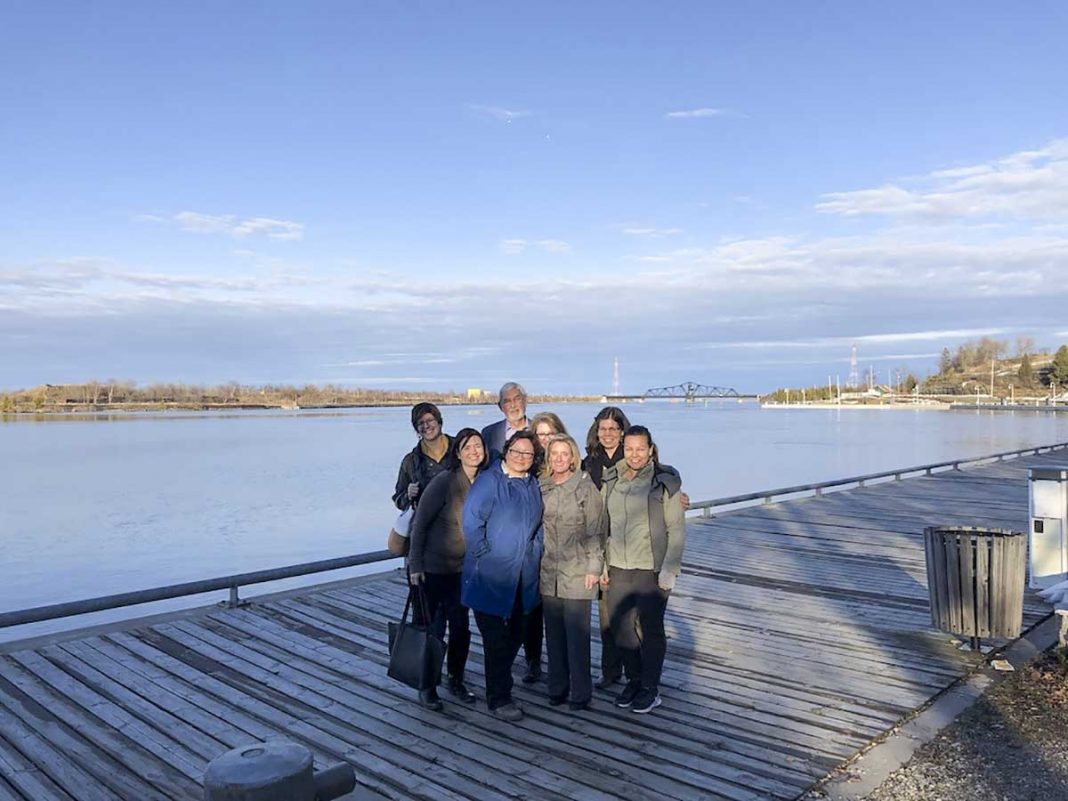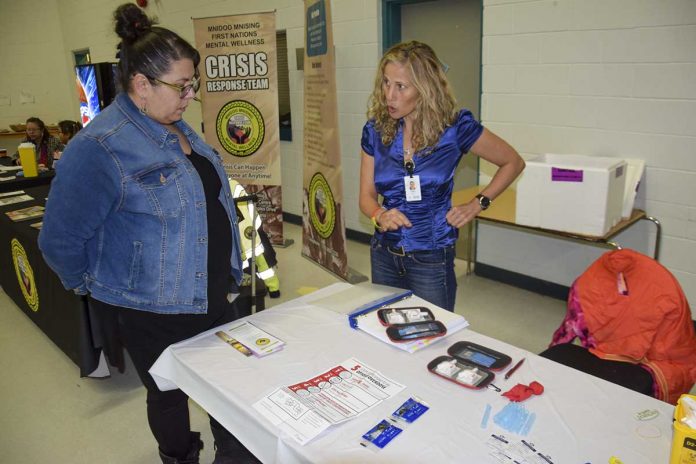Part I of a series on Indigenous dementia care
EDITOR’S NOTE: The breakthrough Canadian Indigenous Cognitive Assessment (CICA) tool is expected to revolutionize dementia diagnosis and care in aging Canadian Indigenous populations. It was developed here on Manitoulin Island. The Expositor will be exploring more aspects of the tool in future papers, continuing in next week’s edition with an explanation of the CICA’s use and how it was created. To access the free CICA tool, visit i-CAARE.ca.
MANITOULIN – Manitoulin Island’s Anishinaabe citizens, along with healthcare workers and teams of researchers, have made history with the release of a revolutionary screening tool for dementia and cognitive impairment for Canadian Indigenous people.
“I’m very happy and excited that it’s finally ready for use by the healthcare providers here on Manitoulin, and anyone else who sees it online,” says Karen Pitawanakwat, registered nurse and community researcher at Naandwechige-Gamig Wikwemikong Health Centre.
On September 24, 2014, The Expositor first reported on funding from Health Canada that led to the creation of the Canadian Consortium on Neurodegeneration in Aging (CCNA). This involved 20 research teams that were tasked with three main issues: delaying the onset of dementia and similar cognitive impairments, preventing these conditions from occurring in the first place, and improving the quality of life for Canadians living with these types of illness, along with their caregivers.
Then-Northern Ontario School of Medicine associate professor of medical anthropology Kristen Jacklin is one of 20 team leaders who were tasked with addressing a specific issue under the CCNA. She headed up Team 20: Issues in dementia care for rural and Indigenous populations.
Dr. Jacklin says her interest in Indigenous experiences with dementia began after a 2007 roundtable discussion hosted by Noojmowin Teg and Mnaamodzawin Health Services. Previously, she had been working with Island communities on health issues such as diabetes. Nobody had been previously working on dementia in Manitoulin’s Anishinaabe communities.
“There wasn’t any information available to help them get informed about how they were going to address the issue or how they might organize services in appropriate ways for the First Nation communities. I had this relationship (with Island communities), and the way I do research is very community driven, so I agreed to start working on it,” says Dr. Jacklin.
There were 47 principal investigators in the first phase of the CCNA. Dr. Jacklin was the only principal investigator based in Northern Ontario. Dr. Jacklin has since moved to become a professor of medical anthropology at the University of Minnesota Medical School Duluth.
Part of the funding within Team 20 led Dr. Jacklin to create the Indigenous Cognition and Aging Awareness Research Exchange (I-CAARE) in 2015. It is a forum through which to examine healthy aging with Indigenous peoples and raise awareness about cognitive health in Indigenous communities. I-CAARE is the home of the newly released Canadian Indigenous Cognitive Assessment (CICA) tool.
The CICA is a culturally sensitive tool based on the Kimberly Indigenous Cognitive Assessment (KICA) tool from Australia. The KICA was created to offer a valid and appropriate tool to determine whether Indigenous peoples in Australia were suffering from a cognitive impairment.
Culturally appropriate tools to assess cognitive function are very lacking in Canada. Before the launch of this tool, all cognitive assessments have been done using a standardized test that does not adapt to any differences in Indigenous culture, education or healthcare. The CICA takes away significant barriers to entry and enables the tool to be brought into non-clinical settings such as a home.
It is designed to be used by both formal and informal caregivers and health providers within a loved one’s home, within the community or in a healthcare setting.
“It is a gentle and culturally safe test that might help to mitigate anxiety, and it can be administered in different languages or through translation,” reads the tool’s guidebook.
Dementia is a considerable problem within Canadian Indigenous populations. Statistics Canada predictions show that First Nation people aged 60 or older will increase in number from 54,156 in 2006 to an estimated 184,334 by 2031, or an increase of 3.4 times the starting number.
Dementia rates are projected to grow at the same time, according to Dr. Jacklin and Canada Research Chair Jennifer Walker of the School of Rural and Northern Health at Laurentian University.
For non-First-Nation individuals over 60, the dementia rate is pegged to increase by 2.3 times by 2031. For First Nation people, however, that rate is expected to grow by four times in that same period, meaning the incidence rate of First Nation people over 60 with dementia will grow at nearly twice the rate of non-First-Nation Canadians.
Dr. Jacklin says pinpointing why dementia is such a problem in Indigenous populations is an extremely difficult task.
“I think there’s a lot of hypotheses around this, but we haven’t undertaken a large-scale study to really be able to answer that question,” she says. “Almost every disease that puts someone at risk for dementia also has a higher prevalence in Indigenous populations.”
The diseases that drive up dementia risk include diabetes and cardiovascular illness. On a population scale, these two run roughly three times higher in Indigenous populations than non-Indigenous populations.
Quality of life for First Nation Canadians has been steadily improving, though it continues to lag behind the Canadian average. This improvement, however, might also be a reason why dementia rates are so much higher in these groups.
“Life expectancy has been increasing in Indigenous populations, so people are now living longer with chronic health conditions that put them at a higher risk for dementia,” says Dr. Jacklin.
In many cases, rich data simply does not exist—owing to a lack of large-scale studies of aging Indigenous people. Dr. Jacklin says gathering reliable information about Indigenous populations would be an important step in improving health outcomes on many fronts. She also acknowledges the importance of Indigenous data sovereignty, meaning the populations gathering the data can manage the access and interpretation of it.
“I think one of the things CICA will offer down the road, if we can be more sure about the accuracy of the diagnoses in the population, we’ll get a better handle on what the true rates are. There’s lots of work to be done,” says Dr. Jacklin.
At the beginning of this undertaking, the researchers had reached out to Wikwemikong Health Centre as one of their first contacts. Soon, the other health authorities on Manitoulin as well as partnering band administration had agreed to work together on an advisory group.
They had also consulted some of the Australian researchers who worked on the KICA, such as Leon Flicker and Dina LoGiudice, as well as University of Saskatchewan neuropsychology researcher Megan O’Connell.
“We needed that support to ensure the tool had good sensitivity and good specificity,” says Ms. Pitwanakwat.





